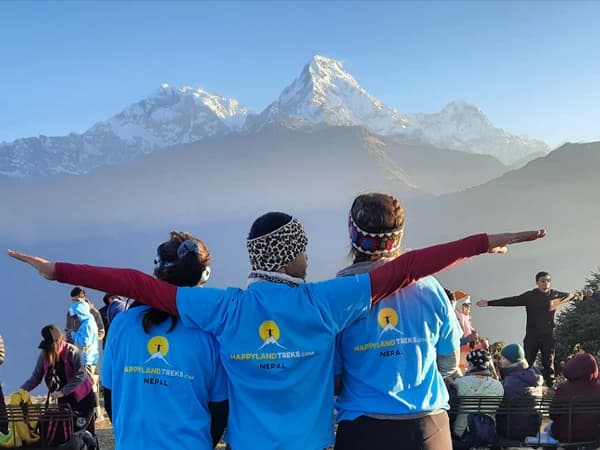The Most Dangerous of the “Death Zone” Mountains
Annapurna I., standing at 8,091 meters, is part of the Annapurna Mountain range in the Himalayas. While Mount Everest often dominates the headlines when it comes to climbing expeditions, Annapurna has a significantly higher death rate. For every three successful summits, one life is lost. This steep ratio makes Annapurna one of the deadliest mountains in the world.
The Annapurna Death Rate
The Annapurna death rate is famously high due to a combination of technical difficulties, unpredictable weather, and frequent avalanches. Unlike the more popular Mt. Everest or Mount Kilimanjaro, Annapurna is less forgiving, with steep slopes that range between 45-50 degrees, creating treacherous conditions for climbers. Many climbers are also not fully prepared for the harsh conditions, which include sudden weather changes and the constant risk of avalanches, especially on the avalanche-prone north side of the mountain.
Over the years, climbing expeditions have claimed the lives of many climbers, from American and British climbers to Pakistani and Irish climbers. While the summit is highly sought after, the risks are ever-present. Climbers face the challenge of overcoming a high death toll while balancing the need for supplemental oxygen and the unpredictable weather that makes each step uncertain.
A Gateway to the Mountain’s Danger
The Annapurna Circuit, which includes the famous Annapurna Base Camp trek, is one of the most popular trekking routes in the world. However, even experienced trekkers must understand that trekking and climbing the Annapurna region come with inherent risks. The Annapurna Conservation Area is a place of great natural beauty, but it also holds an unspoken truth, these mountains are perilous.
Annapurna Base Camp, located at 4,130 meters, is a key destination for trekkers, offering stunning high-altitude views. However, reaching the summit of Annapurna I requires an ascent that goes far beyond the trekking routes. While trekking can be a beautiful experience, any climb higher than Base Camp needs the expertise of an experienced guide and a well-thought-out climbing plan.
Mount Annapurna vs. Mount Everest: A Deadly Comparison
While Mount Everest is the tallest mountain in the world and boasts a higher number of summits, Annapurna’s death rate is significantly higher. Mount Everest’s summit rate is approximately 30%, while Annapurna’s summit-to-death ratio stands at a staggering 32%. This makes Annapurna not only one of the most difficult mountains to summit but also one of the most fatal.
Climbers attempting to ascend Annapurna face several challenges that make it stand apart from Everest. The weather is known to be more unpredictable, with violent storms and strong winds, which make it harder to anticipate the risks. Additionally, Annapurna requires technical climbing skills, especially in the winter season, when the slopes are even steeper, and the avalanche risk is heightened.
The Dangers and Technical Difficulties
Climbing Annapurna is no small feat. The mountain's unpredictable weather, frequent avalanches, and steep slopes all contribute to making it one of the deadliest peaks to attempt. Climbers also have to deal with the harsh realities of high-altitude climbing, including the need for supplemental oxygen and the constant threat of a violent storm.
The Annapurna climbing route is also known for its technical difficulties. From the Annapurna South Face to the Annapurna II and Annapurna III, each part of the mountain offers different challenges. The technical difficulties of Annapurna's ascent require more than just strength and determination so it takes an experienced guide, a solid team, and months of preparation.
Annapurna’s Role in Climbing History
Annapurna has long held a special place in the climbing community. The first successful ascent of Annapurna was in 1950 by French climbers Maurice Herzog and Louis Lachenal. It was a landmark achievement, but also one that came with a heavy price and Herzog lost his fingers to frostbite, and Lachenal was severely injured.
Since then, many renowned climbers, including Chris Bonington and Alex MacIntyre, have attempted the summit. However, it has been a site of tragedy too. The death toll has risen steadily, with climbers of all nationalities falling victim to the mountain’s unforgiving nature. In fact, many climbers have fallen on the descent, with bodies often found in frozen conditions, unable to make it back to base camp.
The Role of Guides and Rescue Missions
Climbing Annapurna is not for the faint-hearted. Climbers require an experienced guide who knows the terrain well. The Annapurna Base Camp trek can lead to higher altitudes, where the weather becomes increasingly difficult to predict. In fact, many climbers have needed rescue operations due to the harsh conditions and technical difficulties.
In recent years, Sherpas like Chhang Dawa Sherpa and Mingma Sherpa have made their mark by leading successful expeditions. Their expertise and guidance are invaluable in navigating the dangerous peaks of Annapurna.
Why Climbers Keep Returning to Annapurna
Despite its challenges and high death rate, Annapurna continues to attract climbers and trekkers from all over the world. For many, it’s the ultimate challenge and a chance to conquer one of the deadliest mountains on Earth. The Annapurna Circuit and Annapurna Base Camp trek remain two of the most popular trekking routes in the Himalayas, with hundreds of climbers returning each year. For others, the chance to experience the Annapurna region's stunning beauty is enough to keep the dream alive.
FAQs
1. Why is Annapurna considered one of the deadliest mountains?
Annapurna is considered one of the deadliest mountains due to its steep slopes, unpredictable weather, and frequent avalanches. The summit-to-death ratio is high, with many climbers losing their lives on the descent or in the harsh conditions of the mountain.
2. What is the summit-to-death ratio for Annapurna?
Annapurna has one of the highest summit-to-death ratios among major mountains. For every three successful summits, one life is lost. This makes Annapurna far more dangerous than other mountains, including Mount Everest.
3. Can climbers summit Annapurna without supplemental oxygen?
While some experienced climbers have managed to summit Annapurna without supplemental oxygen, it is highly recommended to use oxygen due to the extreme altitude and harsh conditions.
4. What is the best season to attempt the Annapurna Summit?
The best time to attempt the Annapurna summit is during the pre-monsoon season (spring) and post-monsoon season (autumn). However, winter ascents are possible but are much riskier due to the extreme cold and the increased risk of avalanches and strong winds.
5. What role do Sherpas play in Annapurna expeditions?
Sherpas like Chhang Dawa Sherpa and Mingma Sherpa have been instrumental in guiding expeditions up Annapurna. Their knowledge of the terrain, the weather, and the technical aspects of the climb is crucial to a successful and safe ascent.
6. What are the biggest risks when climbing Annapurna?
The biggest risks include unpredictable weather, avalanches, steep slopes, technical difficulties, and the mountain’s inherent dangers. Climbers are also at risk from sudden storms, strong winds, and the need for supplemental oxygen at high altitudes.
7. How does Annapurna compare to Mount Everest in terms of difficulty?
While Mount Everest is the tallest mountain in the world, Annapurna is considered more difficult and dangerous due to its technical climbing challenges, higher death rate, and unpredictable weather. The summit-to-death ratio is much higher on Annapurna than Everest.
8. What is the Annapurna Base Camp trek like?
The Annapurna Base Camp trek is a popular route that offers stunning high-altitude views and takes trekkers through the Annapurna Conservation Area. It is a relatively safer option compared to summiting the mountain but still comes with its own risks, especially at higher altitudes.
9. Who are some famous climbers associated with Annapurna?
Notable climbers like Maurice Herzog, Chris Bonington, Alan Arnette, and Alex MacIntyre have all attempted or summited Annapurna. These climbers are famous for their successful ascents as well as their role in highlighting the mountain’s dangers.
10. What is the Annapurna Death Toll?
The exact death toll on Annapurna varies, but it is widely known as one of the most fatal mountains, with a high number of fatalities in relation to the number of successful summits. Climbers should be fully prepared and aware of these risks when attempting the climb.
Conclusion
Annapurna is undeniably one of the toughest mountains to climb, with an unforgiving death rate that remains a sobering reminder of the risks involved. Whether you are trekking the Annapurna Circuit or attempting the summit of Annapurna I, it’s important to understand the dangers and from avalanches and technical climbing challenges to unpredictable weather and steep slopes.
However, for those who make it, the view from the summit of Mount Annapurna offers a unique, rewarding experience that very few will ever understand. As long as climbers are prepared, respect the mountain, and understand the risks, Annapurna will continue to hold a place in the hearts of climbers who crave adventure in the toughest and most dangerous mountains in the world.



